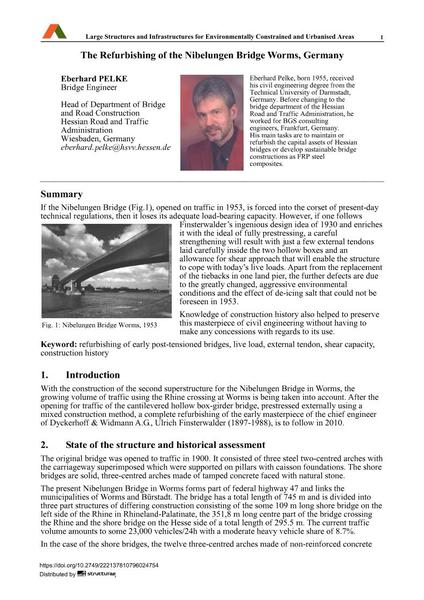The Refurbishing of the Nibelungen Bridge Worms, Germany

|
|
|||||||||||
Bibliographic Details
| Author(s): |
Eberhard Pelke
|
||||
|---|---|---|---|---|---|
| Medium: | conference paper | ||||
| Language(s): | English | ||||
| Conference: | IABSE Symposium: Large Structures and Infrastructures for Environmentally Constrained and Urbanised Areas, Venice, Italy, 22-24 September 2010 | ||||
| Published in: | IABSE Symposium Venice 2010 | ||||
|
|||||
| Page(s): | 312-313 | ||||
| Total no. of pages: | 8 | ||||
| Year: | 2010 | ||||
| DOI: | 10.2749/222137810796024754 | ||||
| Abstract: |
If the Nibelungen Bridge (Fig.1), opened on traffic in 1953, is forced into the corset of present-day technical regulations, then it loses its adequate load-bearing capacity. However, if one follows Finsterwalder’s ingenious design idea of 1930 and enriches it with the ideal of fully prestressing, a careful strengthening will result with just a few external tendons laid carefully inside the two hollow boxes and an allowance for shear approach that will enable the structure to cope with today’s live loads. Apart from the replacement of the tiebacks in one land pier, the further defects are due to the greatly changed, aggressive environmental conditions and the effect of de-icing salt that could not be foreseen in 1953. Knowledge of construction history also helped to preserve Fig. 1: Nibelungen Bridge Worms, 1953 this masterpiece of civil engineering without having to make any concessions with regards to its use. |
||||
| Keywords: |
construction history shear capacity external tendon live load refurbishing of early post-tensioned bridge
|
||||
